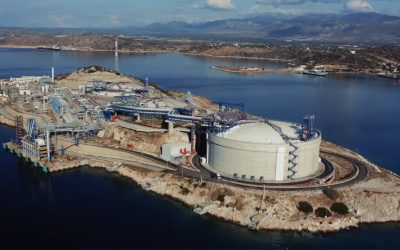The melting of sea ice at the North Pole may be the result of a centuries-old natural cycle and not an indicator of man-made global warming, Scottish scientists have found.
After researching the log-books of Arctic explorers spanning the past 300 years, scientists believe that the outer edge of sea ice may expand and contract over regular periods of 60 to 80 years. This change corresponds roughly with known cyclical changes in atmospheric temperature.
The finding opens the possibility that the recent worrying changes in Arctic sea ice are simply the result of standard cyclical movements, and not a harbinger of major climate change.
The amount of sea ice is currently near its lowest point in the cycle and should begin to increase within about five years.
As a result, Dr Chad Dick, a Scottish scientist working at the Norwegian Polar Institute in Tromso, believes the next five to ten years will be a critical period in our understanding of sea ice and the impact, if any, of long-term global warming.
Concern has been expressed recently that animals such as polar bears could become extinct because sea ice is disappearing. The new research by Dr Dick and a colleague, Dr Dimitry Divine, gives rise to hopes the melting will stop soon.
However, Dr Dick warned that if the ice carried on melting, it would mean that man-made global warming had disrupted the natural process – with potentially disastrous results.
He said: “Cycles of 60 to 80 years have been identified before in atmospheric temperature records in the Arctic. The old records that we recovered from ships’ logs and other sources may show that similar cycles are present in sea ice.
“I’ve this gut feeling that within ten years from now we’ll know for certain whether we re losing sea ice long term or whether it s coming back.
“If it doesn’t t come back it shows we are in serious trouble. Sea ice has a whole lot of effects on climate and it is pretty important.”
Sea ice protects the northern coastlines of Canada, Russia and the United States from erosion caused by storms. If it melted, waves crashing on to the shoreline could release vast stores of carbon dioxide stored in permafrost, which would increase global warming still further.
Dr Dick said the research did not suggest that global warming was not a reality.
“You couldn’t t say, The sea ice is coming back so therefore there s no global warming . It s never going to be that simple,” he said. “But the question now is the extent of global warming, how fast it will happen and whether there are any surprises on the way.
“We know there is warming and that it s caused by humans, but it will be a great relief to many people if the ice comes back as opposed to going away.”
He added that some people might be pleased to see less ice in the Arctic as it would finally open up the North-west Passage trade route – sought by many of the explorers whose log-books were used in the study – between the Atlantic and Pacific oceans.
“If the sea ice continues to disappear it could cut something like 5,000km off the sea route from Europe to Japan and China. There are people who think that s a good thing,” Dr Dick said.
“Humans are great at adapting to change. We might lose polar bears and some species of seal, but most people don t worry about that, it doesn’t t affect them. And if it means their stereo can be shipped from China more quickly, they are happy with that.”
Among the hundreds of mariners whose records were examined by Dr Dick were the noted Scottish arctic explorer Sir John Ross and his nephew Sir James Clark Ross.
Sir James discovered the magnetic North Pole in 1831 after earlier accompanying his uncle to the Arctic in 1818. He then began to explore the Antarctic, giving his name to the Ross Sea, Ross Island and the Ross Ice Shelf.
The polar explorer Clive Waghorn, who lives in Limekilns, Fife, said the idea of regular periodic changes in sea ice was “entirely credible”.
“You read stories of the old whalers and sailors in the Arctic in some seasons coming back with no catches at all because they weren’t t able to get as far north as they could in other seasons,” he said.
“Whalers were always rather secretive about where they had been because they didn’t t want people knowing where they had been if they had a successful trip, but I would say as the record [of log-books] goes, it s pretty objective.”
He said he shuddered to think what would happen if the Arctic lost its sea ice.
“I think ecologically it would be a bit of a disaster. It would also open the Arctic up for mineral and oil exploration, which would be another disaster,” Mr. Waghorn said.
In January, the international Climate Change Task Force warned that global warming could reach a “point of no return” in ten to 20 years by which time atmospheric carbon dioxide concentrations would be so great that any attempt to reduce them would be futile.
Robin Harper, a Scottish Green Party MSP, said that while he hoped Arctic sea ice would return, it could actually be a false sign of hope that global warming was not as serious as previously thought.
“All it would prove is that global warming doesn’t t affect that particular cycle,” he said.
“There would be no reason for us to be complacent if it comes back.”
Gulf Stream could be switched off
THERE are fears that the disappearance of polar ice could have a catastrophic effect on the world s climate.
The presence of large areas of ice helps to moderate the world s temperature by reflecting the sun s rays and keeping the planet cool.
As the ice sheets reduce, this exposes more areas of water, which absorb more heat from the sun, warming the planet and reducing areas of ice still further.
Perhaps the biggest fear is that cold melt-water could “switch off” the Gulf Stream and even the Earth s system of hot and cold currents, known as the Ocean Conveyor.
The Gulf Stream has a major effect on Britain s climate, allowing palm trees to grow on the west coast of Scotland. Without it, Scotland s climate would be more like Canada s.
The Ocean Conveyor has stopped flowing in the past – 8,200 years ago and 12,700 years ago – in an event associated with the start of an ice age. Melting sea ice will not have an impact on sea levels as it already displaces its own weight of water. Large land-based ice sheets on Greenland and in the Antarctic are the main sources of concern.
Huge quantities of carbon – a major greenhouse gas – are stored frozen on the ocean floor and in permafrost in Siberia and Canada particularly. Melting ice would release this into the atmosphere, further increasing global warming.
This is one reason why scientists fear the world could reach a “tipping point” in about ten to 20 years time when we will not be able to reverse global warming.
Sea ice has a calming effect on the water, as waves cannot travel very far. This protects northern Arctic circle coastlines from erosion which would release carbon stored in permafrost.
In a warmer world, more water from the sea will evaporate. Greater evaporation actually helps increase the amount of sea ice as fresh water running off the land freezes more easily than salt water in the sea.
But, as always in climate studies, the situation is complex, because while some of the water vapour will form clouds which reflect sunlight, it also helps to retain warmth, particularly at night.


